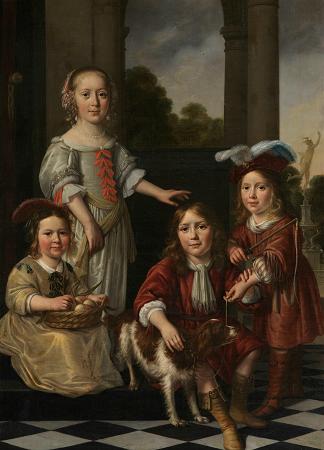Groeninge Museum. The Groeningemuseum is a municipal museum in Bruges, Belgium, built on the site of the medieval Eekhout Abbey. It houses a comprehensive survey of six centuries of Flemish and Belgian painting, from Jan van Eyck to Marcel Broodthaers. The museum's many highlights include its collection of Early Netherlandish paintings, works by a wide range of Renaissance and Baroque masters, as well as a selection of paintings from the 18th and 19th century neo-classical and realist periods, milestones of Belgian symbolism and modernism, masterpieces of Flemish Expressionism and many items from the city's collection of post-war modern art. During the occupation of the Southern Netherlands by the French in 1794, the churches, monasteries and public buildings were looted by the French and everything that was not too hot or too heavy was taken to Paris. The revolutionary 'art commissioners' only needed a few months to open up more than 200 works by the Flemish school. The works that were not transported to Paris were stored in the former Duinenabdij on the Potterierei in Bruges and thus the Musée de l'Ecole Centrale du Département de la Lys (the Museum of the School of the Leie Department) was created. Some five hundred confiscated works have been brought together in this museum and several of the Groeninge Museum's top works come from this collection. In 1816, a number of works stolen by the French and transferred to Paris were returned to Bruges and housed in the Academy, including the Madonna with canon Joris van der Paele by Jan van Eyck, the Moreel triptych by Hans Memling and the Judgment of Cambyses by Gerard David. The paintings recovered from the Musée de l'Ecole Centrale in 1803, including the Death of Mary by Hugo van der Goes, the Baptism of Christ by Gerard David and the Last Judgment by Jan Provoost, had already been housed in Bruges' town hall. In 1828, the Academy received permission to transfer the paintings from the town hall to its own collection, and so the works that now form the core of the collection of Flemish Primitives of the Groeninge Museum ended up in the Academy's museum, first in the Poortersloge and afterwards, from 1866 in the Bogaerdenschool. In 1892, the Academy again transferred its collection to the city council and that was the beginning of the Municipal Museum of Painting , which later became the Museum of Fine Arts . The origins of the Groeninge Museum therefore go back to the museum of the Academy in the early eighteenth century, making it one of the oldest museums in Belgium. Because the Bogaerden School was not really suitable as an exhibition space, it was decided to build a new museum to a design by Joseph Viérin. But it would take until 1930 before the Groeninge Museum was inaugurated at its current location. In the new museum, the scattered collections could be brought back together so that the evolution of art from the fifteenth century to the present day can be shown again in one museum.
more...














